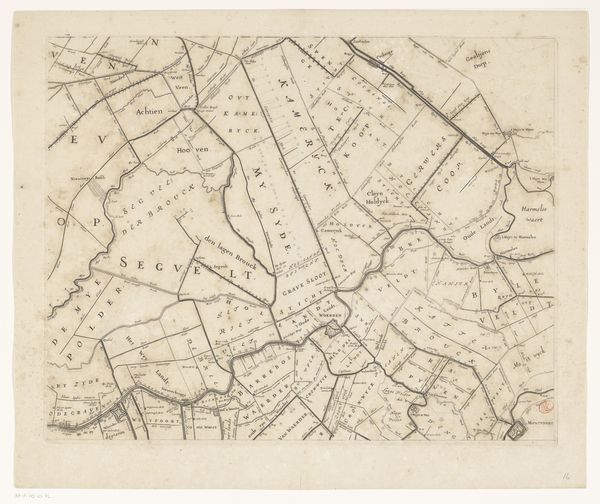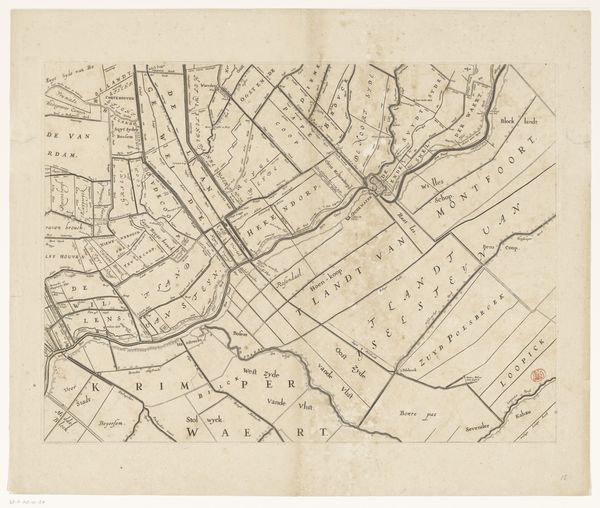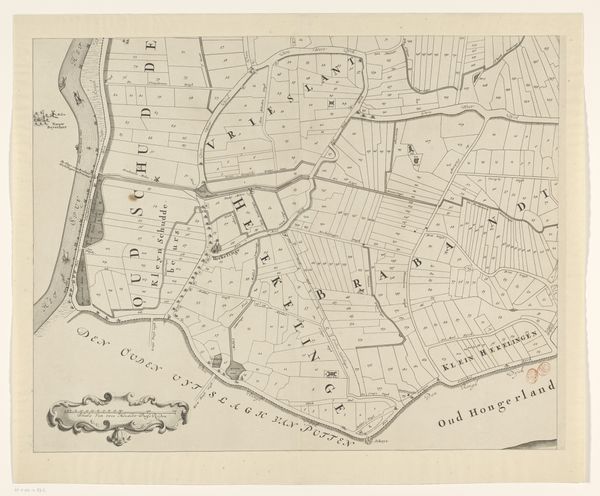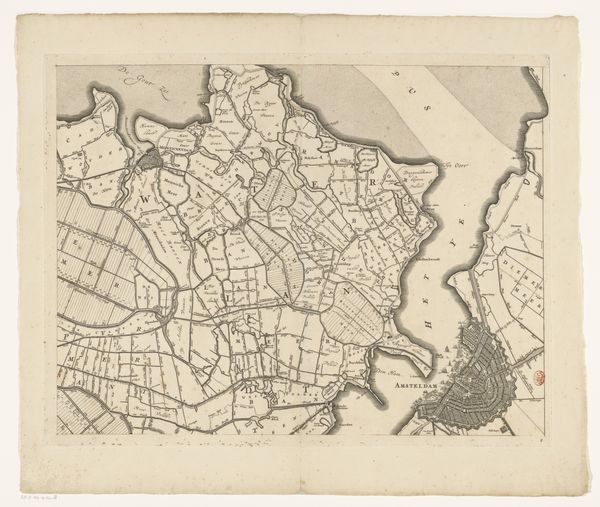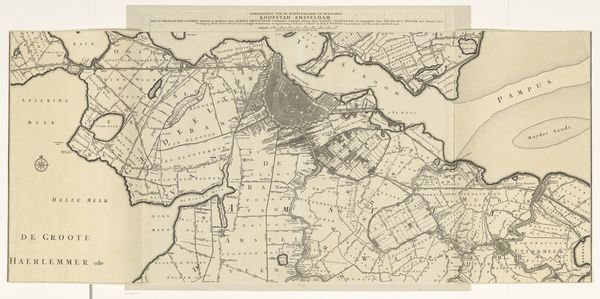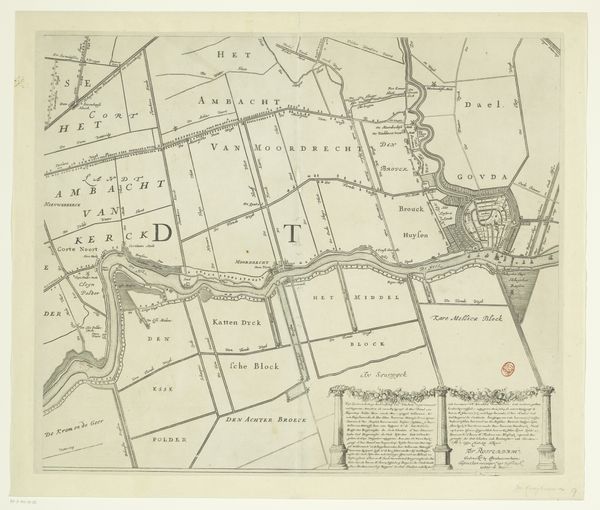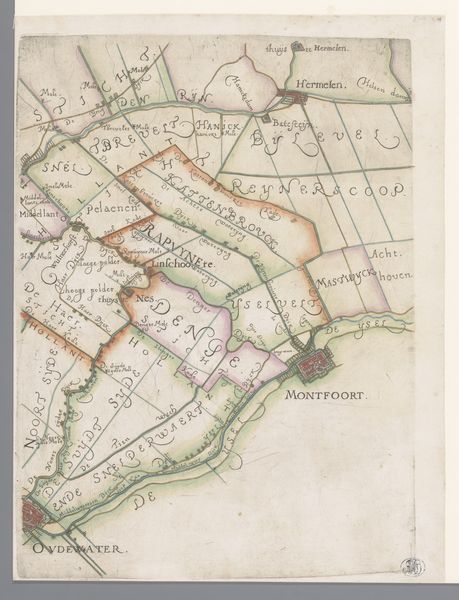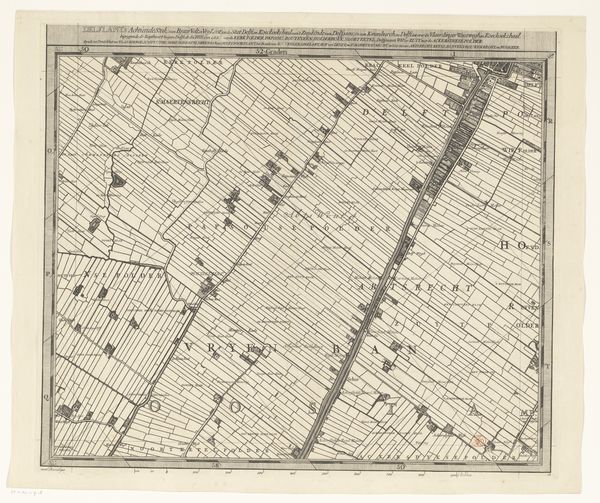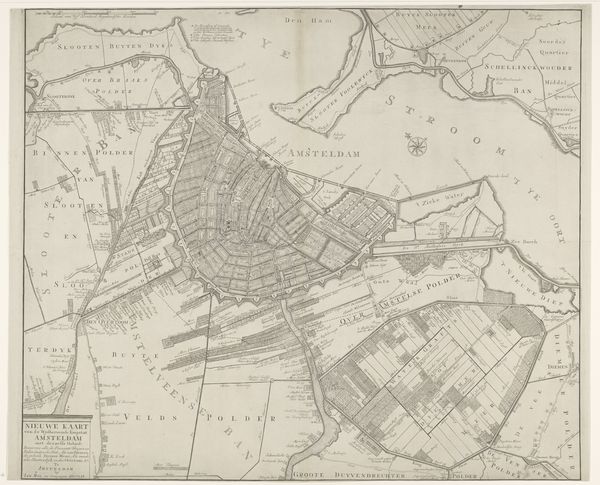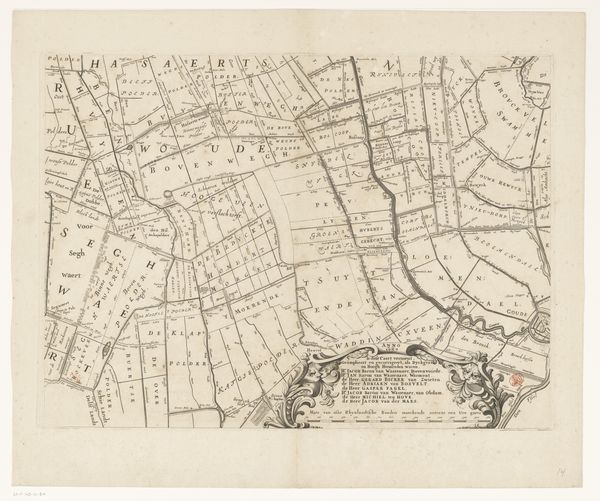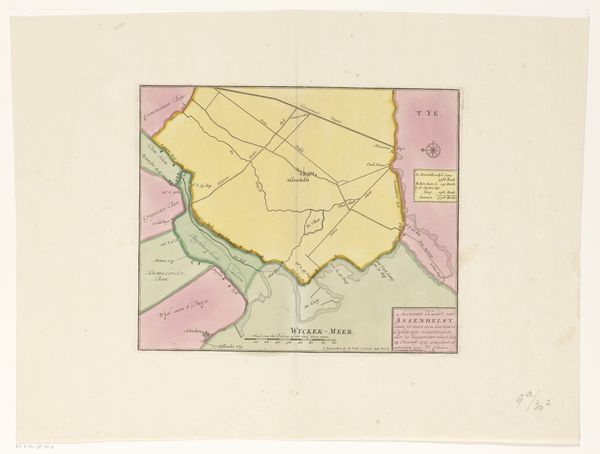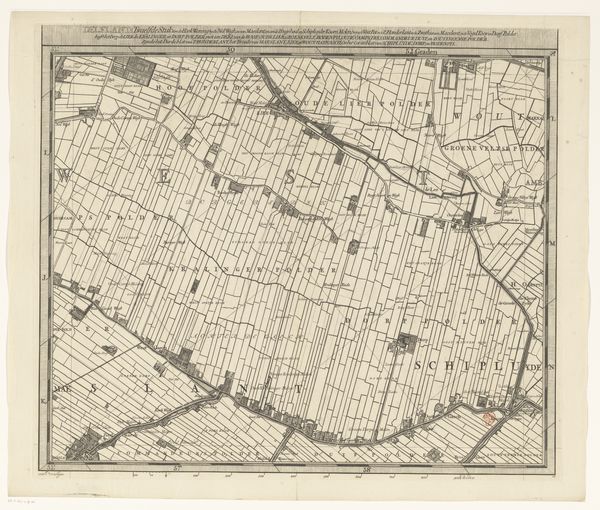
Kaart van het dijkgraafschap van de Vier Noorder Koggen (deel linksonder) 1731
0:00
0:00
hendrikdeleth
Rijksmuseum
drawing, print, paper, ink, engraving
#
drawing
# print
#
pen sketch
#
landscape
#
paper
#
ink
#
geometric
#
genre-painting
#
engraving
Dimensions: height 480 mm, width 587 mm
Copyright: Rijks Museum: Open Domain
Editor: This detailed map, “Kaart van het dijkgraafschap van de Vier Noorder Koggen (deel linksonder)” created by Hendrik de Leth in 1731, using ink and engraving. I find it really intricate, with all the little divisions and names. What do you make of this as an artwork, rather than just a practical document? Curator: Well, let’s consider what a map like this meant in its time. It’s not just lines on paper, it's a statement about control, ownership, about humanity imposing order on nature. Maps of this detail suggest a culture obsessed with boundaries, with demarcating “us” from “them.” Editor: So the act of mapping itself has symbolic weight? Curator: Exactly. Think about what it means to name places, to visually dissect a landscape into manageable parcels. What collective psychological need is being fulfilled? How does this connect with land ownership or geopolitical ambition? Does the crisp linework suggest rational clarity or a suppression of something more chaotic? Editor: That’s interesting, I never considered that maps could reflect psychological ideas. It feels very objective, but maybe it is really about something less rational. Curator: What emotional associations do you feel when viewing it, given what we’ve discussed? Does it give you a sense of stability, security, or does it inspire perhaps a feeling of being confined or watched? What is revealed and what is obscured in this way of portraying land? Editor: I think I now see it less as just information, and more as an attempt to frame and define the relationship between people and their territory, maybe even ourselves. Curator: Precisely! Maps reveal just as much about the mapmaker as the mapped.
Comments
No comments
Be the first to comment and join the conversation on the ultimate creative platform.
